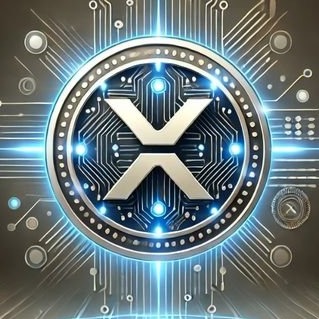Bitget:全球日交易量排名前 4!
BTC 市占率62.85%
Bitget 新幣上架 : Pi Network
BTC/USDT$84080.89 (+5.66%)恐懼與貪婪指數25(恐懼)
山寨季指數:0(比特幣季)
盤前交易幣種PAWS,WCT比特幣現貨 ETF 總淨流量:-$149.5M(1 天);-$653.5M(7 天)。Bitget 新用戶立享 6,200 USDT 歡迎禮包!立即領取
到 Bitget App 隨時隨地輕鬆交易!立即下載
Bitget:全球日交易量排名前 4!
BTC 市占率62.85%
Bitget 新幣上架 : Pi Network
BTC/USDT$84080.89 (+5.66%)恐懼與貪婪指數25(恐懼)
山寨季指數:0(比特幣季)
盤前交易幣種PAWS,WCT比特幣現貨 ETF 總淨流量:-$149.5M(1 天);-$653.5M(7 天)。Bitget 新用戶立享 6,200 USDT 歡迎禮包!立即領取
到 Bitget App 隨時隨地輕鬆交易!立即下載
Bitget:全球日交易量排名前 4!
BTC 市占率62.85%
Bitget 新幣上架 : Pi Network
BTC/USDT$84080.89 (+5.66%)恐懼與貪婪指數25(恐懼)
山寨季指數:0(比特幣季)
盤前交易幣種PAWS,WCT比特幣現貨 ETF 總淨流量:-$149.5M(1 天);-$653.5M(7 天)。Bitget 新用戶立享 6,200 USDT 歡迎禮包!立即領取
到 Bitget App 隨時隨地輕鬆交易!立即下載



APENFT 價格NFT
上架
報價幣種:
TWD
NT$0.{4}1348+0.98%1D
價格
TradingView
市值
APENFT 價格走勢圖(NFT/TWD)
最近更新時間 2025-04-11 18:06:32(UTC+0)
市值:NT$13,476,756,802.45
完全稀釋市值:NT$13,476,756,802.45
24 小時交易額:NT$809,680,775.36
24 小時交易額/市值:6.00%
24 小時最高價:NT$0.{4}1351
24 小時最低價:NT$0.{4}1321
歷史最高價:NT$0.0002473
歷史最低價:NT$0.{5}9351
流通量:999,990,000,000,000 NFT
總發行量:
999,990,000,000,000NFT
流通率:99.00%
最大發行量:
--NFT
以 BTC 計價:0.{11}4964 BTC
以 ETH 計價:0.{9}2635 ETH
以 BTC 市值計價:
NT$0.05
以 ETH 市值計價:
NT$0.01
合約:
0x20ee...71aecca(BNB Smart Chain (BEP20))
更多
您今天對 APENFT 感覺如何?
注意:此資訊僅供參考。
APENFT (NFT) 簡介
加密货币APENFT是一个备受关注的数字资产,其在加密艺术和非同质化代币(NFT)市场中扮演了重要角色。APENFT的创始人致力于通过这一平台为艺术家和收藏家提供了一个创新的方式来展示和交易数字艺术作品。
APENFT的独特之处在于它的艺术收藏品和NFT市场的规模和多样性。平台上有来自全球顶级艺术家的精选作品,包括绘画、摄影、数字艺术和虚拟现实作品等。这些艺术品经过数字化处理,以不可复制和不可替代的NFT形式存在,确保了作品的唯一性和所有权。
除了艺术收藏品,APENFT还与一些顶级的博物馆和艺术机构合作,将珍贵的艺术作品数字化为NFT,以便更广泛地传播和保护文化遗产。
APENFT的NFT市场也是一个值得关注的亮点。这个平台提供了一个交易和投资NFT的机会,买家和卖家可以在这里进行安全和透明的交易。此外,APENFT还通过与其他加密货币项目合作,举办拍卖和独特的艺术活动,为持有者提供更多的机会来参与和体验数字艺术世界。
APENFT在加密货币领域的成功也得益于其强大的技术基础。它建立在区块链技术之上,使得交易记录和NFT的所有权可以被永久、透明地记录和验证。这保证了交易的安全性和可追溯性,为参与者提供了更高的信任度。
总之,APENFT作为一种数字资产和数字艺术平台,具有重要的历史意义和独特的功能。它为艺术家、收藏家和投资者提供了一个全新的交流和创作空间,并为数字艺术市场的发展做出了贡献。这一创新和前瞻性的平台正不断改变着艺术领域的格局,并将继续在加密货币领域发挥重要作用。
APENFT 的 AI 分析報告
今日加密市場熱點查看報告
今日 APENFT 價格表現總結查看報告
APENFT 項目分析報告查看報告
今日 APENFT 價格 TWD
今日 APENFT 即時價格為 NT$0.{4}1348 TWD,目前市值為 NT$13.48B。過去 24 小時內,APENFT 價格漲幅為 0.98%,24 小時交易量為 NT$809.68M。NFT/TWD(APENFT 兌換 TWD)兌換率即時更新。
APENFT 價格歷史(TWD)
過去一年,APENFT 價格上漲了 -21.23%。在此期間,NFT 兌 TWD 的最高價格為 NT$0.{4}2836,NFT 兌 TWD 的最低價格為 NT$0.{4}1171。
時間漲跌幅(%) 最低價
最低價 最高價
最高價 
 最低價
最低價 最高價
最高價 
24h+0.98%NT$0.{4}1321NT$0.{4}1351
7d-4.34%NT$0.{4}1286NT$0.{4}1410
30d-3.44%NT$0.{4}1284NT$0.{4}1498
90d-18.11%NT$0.{4}1284NT$0.{4}1729
1y-21.23%NT$0.{4}1171NT$0.{4}2836
全部時間+478.28%NT$0.{5}9351(2023-06-10, 1 年前 )NT$0.0002473(2021-09-05, 3 年前 )
APENFT 的最高價格是多少?
APENFT 兌換 TWD 的歷史最高價(ATH)為 NT$0.0002473,發生於 2021-09-05。相較於 APENFT 歷史最高價,目前 APENFT 價格回撤了 94.55%。
APENFT 的最低價格是多少?
APENFT 兌換 TWD 的歷史最低價(ATL)為 NT$0.{5}9351,發生於 2023-06-10。相較於 APENFT 歷史最低價,目前 APENFT 價格上漲了 44.13%。
APENFT 價格預測
什麼時候是購買 NFT 的好時機? 我現在應該買入還是賣出 NFT?
在決定買入還是賣出 NFT 時,您必須先考慮自己的交易策略。長期交易者和短期交易者的交易活動也會有所不同。Bitget NFT 技術分析 可以提供您交易參考。
根據 NFT 4 小時技術分析,交易訊號為 買入。
根據 NFT 1 日技術分析,交易訊號為 賣出。
根據 NFT 1 週技術分析,交易訊號為 強力賣出。
NFT 在 2026 的價格是多少?
根據 NFT 的歷史價格表現預測模型,預計 NFT 的價格將在 2026 達到 NT$0.{4}1241。
NFT 在 2031 的價格是多少?
2031,NFT 的價格預計將上漲 +27.00%。 到 2031 底,預計 NFT 的價格將達到 NT$0.{4}2454,累計投資報酬率為 +82.69%。
常見問題
什麼因素影響APENFT的價格?
APENFT的價格受多種因素的影響,包括整體市場情緒、NFT行業的發展、合作夥伴關係和合作、項目進展、投資者興趣,以及更廣泛的經濟指標。
APENFT的價格多久變化一次?
APENFT的價格可以經常變動,通常根據市場狀況和像Bitget這樣的交易所的交易量在一天內波動多次。
APENFT目前的價格預測是什麼?
APENFT的價格預測在分析師之間存在很大的差異,受到技術分析、市場趨勢和最近新聞的影響。在得出結論之前,進行自己的研究並諮詢多個來源是至關重要的。
我該如何購買APENFT?
您可以在幾個加密貨幣交易所購買APENFT。選項之一是Bitget交易所,您可以根據可用的交易對,將其與其他加密貨幣或法定貨幣進行交易。
為什麼APENFT的價格如此波動?
APENFT的價格可能因為加密貨幣市場的投機性質、項目的早期階段、市場情緒以及在Bitget等交易所的交易量波動而波動。
APENFT能否達到新的歷史最高價?
如果項目有利的進展,NFT的接受度增加,市場條件良好,APENFT有可能達到新的歷史最高價;然而,確切地預測此類變動是具有挑戰性的。
APENFT在價格表現方面與其他NFT相關幣種相比如何?
在價格表現方面,APENFT可以根據市場資本化、交易量和價格歷史等指標與其他NFT相關幣種進行比較。每個幣種的表現都受到其特定用例和市場認知的影響。
APENFT的歷史價格趨勢如何?
APENFT的歷史價格趨勢顯示根據市場需求、新聞公告及對NFT的普遍興趣而波動。查看Bitget等平台的價格圖表和歷史數據以獲得更清楚的情況是重要的。
我如何追蹤APENFT的價格變動?
您可以使用各種加密貨幣追蹤網站和工具,或通過觀看Bitget交易所的價格圖表和交易量來追蹤APENFT的價格變動。
投資APENFT有哪些風險?
投資APENFT承載著加密貨幣特有的高波動性、市場操縱、監管變化和技術挑戰等風險。在投資前進行充分的研究並考慮您的風險承受能力至關重要。
APENFT 的目前價格是多少?
APENFT 的即時價格為 NT$0(NFT/TWD),目前市值為 NT$13,476,756,802.45 TWD。由於加密貨幣市場全天候不間斷交易,APENFT 的價格經常波動。您可以在 Bitget 上查看 APENFT 的市場價格及其歷史數據。
APENFT 的 24 小時交易量是多少?
在最近 24 小時內,APENFT 的交易量為 NT$809.68M。
APENFT 的歷史最高價是多少?
APENFT 的歷史最高價是 NT$0.0002473。這個歷史最高價是 APENFT 自推出以來的最高價。
我可以在 Bitget 上購買 APENFT 嗎?
可以,APENFT 目前在 Bitget 的中心化交易平台上可用。如需更詳細的說明,請查看我們很有幫助的 如何購買 apenft 指南。
我可以透過投資 APENFT 獲得穩定的收入嗎?
當然,Bitget 推出了一個 策略交易平台,其提供智能交易策略,可以自動執行您的交易,幫您賺取收益。
我在哪裡能以最低的費用購買 APENFT?
Bitget提供行業領先的交易費用和市場深度,以確保交易者能够從投資中獲利。 您可通過 Bitget 交易所交易。
APENFT 資訊
查看更多
APENFT 行情
APENFT 持幣
APENFT 持幣分布矩陣
APENFT 持幣分布集中度
巨鯨
投資者
散戶
APENFT 地址持有時長分布
長期持幣者
游資
交易者
coinInfo.name(12)即時價格表

全球 APENFT 價格
目前 APENFT 用其他貨幣計價是多少?最近更新時間:2025-04-11 18:06:32(UTC+0)
NFT 兌換 MXN
Mexican Peso
$0NFT 兌換 GTQGuatemalan Quetzal
Q0NFT 兌換 CLPChilean Peso
$0NFT 兌換 HNLHonduran Lempira
L0NFT 兌換 UGXUgandan Shilling
Sh0NFT 兌換 ZARSouth African Rand
R0NFT 兌換 TNDTunisian Dinar
د.ت0NFT 兌換 IQDIraqi Dinar
ع.د0NFT 兌換 TWDNew Taiwan Dollar
NT$0NFT 兌換 RSDSerbian Dinar
дин.0NFT 兌換 DOPDominican Peso
$0NFT 兌換 MYRMalaysian Ringgit
RM0NFT 兌換 GELGeorgian Lari
₾0NFT 兌換 UYUUruguayan Peso
$0NFT 兌換 MADMoroccan Dirham
د.م.0NFT 兌換 OMROmani Rial
ر.ع.0NFT 兌換 AZNAzerbaijani Manat
₼0NFT 兌換 KESKenyan Shilling
Sh0NFT 兌換 SEKSwedish Krona
kr0NFT 兌換 UAHUkrainian Hryvnia
₴0- 1
- 2
- 3
- 4
- 5
如何購買 APENFT(NFT)

建立您的免費 Bitget 帳戶
使用您的電子郵件地址/手機號碼在 Bitget 註冊,並建立強大的密碼以確保您的帳戶安全

認證您的帳戶
輸入您的個人資訊並上傳有效的身份照片進行身份認證

將 APENFT 兌換為 NFT
在 Bitget 上選擇加密貨幣進行交易。
了解更多購買其他幣種
您可以在哪裡購買 APENFT(NFT)?
影片部分 - 快速認證、快速交易

如何在 Bitget 完成身分認證以防範詐騙
1. 登入您的 Bitget 帳戶。
2. 如果您是 Bitget 的新用戶,請觀看我們的教學,以了解如何建立帳戶。
3. 將滑鼠移到您的個人頭像上,點擊「未認證」,然後點擊「認證」。
4. 選擇您簽發的國家或地區和證件類型,然後根據指示進行操作。
5. 根據您的偏好,選擇「手機認證」或「電腦認證」。
6. 填寫您的詳細資訊,提交身分證影本,並拍攝一張自拍照。
7. 提交申請後,身分認證就完成了!
加密貨幣投資(包括透過 Bitget 線上購買 APENFT)具有市場風險。Bitget 為您提供購買 APENFT 的簡便方式,並且盡最大努力讓用戶充分了解我們在交易所提供的每種加密貨幣。但是,我們不對您購買 APENFT 可能產生的結果負責。此頁面和其包含的任何資訊均不代表對任何特定加密貨幣的背書認可,任何價格數據均採集自公開互聯網,不被視為來自Bitget的買賣要約。
APENFT 評級
社群的平均評分
4.6
此內容僅供參考。
Bitget 觀點

Kanyalal
45分鐘前
Ethereum (ETH) is a decentralized, open-source blockchain platform that enables developers to build and deploy smart contracts and decentralized applications (dApps). It was proposed in late 2013 by Vitalik Buterin, a Russian-Canadian programmer, and development began in 2014. Ethereum was officially launched in July 2015. The platform’s native cryptocurrency, Ether (ETH), is used to pay for transaction fees, computational services, and the execution of smart contracts on the network.
Key Features of Ethereum:
1. Smart Contracts: One of Ethereum’s most revolutionary features is its ability to execute smart contracts. These are self-executing contracts where the terms of the agreement are directly written into code. Smart contracts automatically execute actions when predefined conditions are met, eliminating the need for intermediaries, thus making transactions more efficient, secure, and transparent.
2. Ethereum Virtual Machine (EVM): The Ethereum Virtual Machine (EVM) is the decentralized computer that executes smart contracts on the Ethereum blockchain. It allows developers to create and deploy applications that can run on the Ethereum network. It is crucial in maintaining the state of the blockchain and ensuring that all transactions are processed consistently across nodes in the Ethereum network.
3. Decentralized Applications (dApps): Ethereum provides the foundation for building dApps. These are applications that run on a blockchain or a peer-to-peer network, ensuring they are transparent, secure, and without central control. Examples include decentralized finance (DeFi) platforms, gaming platforms, and NFT (non-fungible token) marketplaces.
4. Proof of Stake (PoS) Consensus: Ethereum originally used the Proof of Work (PoW) consensus algorithm, similar to Bitcoin, which involved miners solving cryptographic puzzles to validate transactions and create new blocks. However, Ethereum transitioned to Proof of Stake (PoS) with the Ethereum 2.0 upgrade, which started in December 2020. In PoS, validators replace miners to secure the network by staking their ETH as collateral to propose new blocks. PoS is more energy-efficient than PoW, reduces centralization, and improves scalability.
5. Scalability and Upgrades (Ethereum 2.0): Ethereum’s original design faced scalability challenges, especially as the network grew and transaction volumes increased. To address this, Ethereum is undergoing a series of upgrades under the Ethereum 2.0 initiative. These upgrades aim to enhance scalability, security, and sustainability through:
Sharding: The process of splitting the Ethereum network into multiple smaller chains (shards) to handle more transactions simultaneously.
Proof of Stake (PoS): Transitioning from Proof of Work (PoW) to PoS for better efficiency and lower energy consumption.
6. Gas Fees: Gas fees are the transaction fees users pay to conduct operations on the Ethereum network. These fees vary based on network demand and the complexity of the operation. Gas fees have often been a point of criticism due to their high volatility, but Ethereum’s upgrade to Ethereum 2.0 aims to address this issue.
How Ethereum Works:
1. Ether (ETH): Ether is the native cryptocurrency of the Ethereum network and is used to power smart contracts and dApps. It is required for both transaction fees and computational services. Unlike Bitcoin, which primarily acts as a store of value, Ethereum is designed to be used as a "fuel" for decentralized applications, allowing developers to create complex financial and non-financial applications.
2. Smart Contracts Execution: When a user initiates a transaction or interaction with a dApp on Ethereum, the transaction is sent to the network, where miners (in the PoW model) or validators (in the PoS model) process it. The EVM executes the smart contract, which automatically carries out the terms of the contract, such as transferring funds or triggering actions.
3. Staking and Ethereum 2.0: Ethereum’s shift to PoS (part of Ethereum 2.0) allows anyone who holds at least 32 ETH to become a validator and participate in securing the network. Validators are chosen to propose and verify blocks, earning rewards in ETH for their participation. Staking helps secure the network and replace the energy-intensive mining process from Ethereum’s previous PoW model.
Advantages of Ethereum:
1. Smart Contract Functionality: Ethereum’s smart contract functionality has revolutionized the way digital agreements are executed, reducing the need for middlemen and making transactions more secure, efficient, and transparent.
2. Decentralization: Like Bitcoin, Ethereum is decentralized, meaning no central authority governs or controls the network. This ensures the network is resilient to censorship and operates without the interference of governments or corporations.
3. Support for dApps: Ethereum’s robust ecosystem supports the creation of decentralized applications (dApps). This broadens the scope of blockchain technology beyond digital currencies to areas like finance (DeFi), entertainment, gaming, and even identity management.
4. Ethereum 2.0 (PoS): The transition to PoS is seen as a significant advantage, as it makes Ethereum more energy-efficient and scalable. This change should allow Ethereum to handle more transactions, reduce gas fees, and provide greater security.
5. Large Developer Community: Ethereum has one of the largest and most active developer communities, continually innovating and pushing the boundaries of what’s possible in the blockchain space. This community support drives growth and the continuous improvement of the Ethereum network.
Disadvantages of Ethereum:
1. Scalability Issues: Although Ethereum is working toward improvements with Ethereum 2.0 and sharding, scalability remains a challenge. As the network grows and adoption increases, transaction speeds can slow down, and gas fees can become prohibitively high during peak demand.
2. Gas Fees: Gas fees are one of the biggest issues with Ethereum. During periods of high demand, the fees can rise dramatically, making simple transactions expensive. However, Ethereum 2.0 is expected to bring improvements to gas fee management, though the problem may not be fully resolved until sharding is implemented.
3. Security Vulnerabilities: Although Ethereum’s blockchain is generally secure, there have been instances of security vulnerabilities in smart contracts. Poorly written code can lead to issues like funds being stolen or lost. Users are advised to be cautious when interacting with smart contracts.
4. Complexity: Ethereum’s ecosystem, including smart contract creation, decentralized finance (DeFi), and NFTs, can be complex for new users. There is a steep learning curve, and mistakes can be costly.
Ethereum's Impact on the Financial Ecosystem:
1. Decentralized Finance (DeFi): Ethereum has been the driving force behind the rise of decentralized finance (DeFi), a movement aimed at replacing traditional financial intermediaries (banks, lenders, and brokers) with decentralized applications. Ethereum-based platforms allow users to borrow, lend, trade, and earn interest on their crypto assets without needing a bank.
2. NFTs (Non-Fungible Tokens): Ethereum is also the foundation for the booming NFT market. NFTs are unique digital tokens that represent ownership or proof of authenticity for digital assets like art, music, and collectibles. Ethereum’s ERC-721 standard is widely used for creating NFTs.
3. Enterprise Use Cases: Ethereum is increasingly being adopted for enterprise use cases, such as supply chain management, voting systems, and identity verification. Its flexible platform allows businesses to create customized blockchain solutions for a variety of industries.
The Future of Ethereum:
The future of Ethereum is filled with potential, especially with the ongoing developments in Ethereum 2.0. The shift to PoS and the eventual implementation of sharding should address many of Ethereum’s scalability and high gas fee issues. As more applications are built on Ethereum and its ecosystem expands, it could play a central role in the global transition to a decentralized economy.
In conclusion, Ethereum’s combination of smart contract functionality, dApp support, and continuous upgrades positions it as one of the most influential blockchain platforms in the world. Despite facing challenges like scalability and high gas fees, Ethereum’s active development community and transition to Ethereum 2.0 give it strong growth potential.
$ETH
FUEL+3.71%
ETH+3.71%
Africangadus
2小時前
Ethereum (ETH) is a decentralized, open-source blockchain platform that enables developers to build and deploy smart contracts and decentralized applications (dApps). It was proposed in late 2013 by Vitalik Buterin, a Russian-Canadian programmer, and development began in 2014. Ethereum was officially launched in July 2015. The platform’s native cryptocurrency, Ether (ETH), is used to pay for transaction fees, computational services, and the execution of smart contracts on the network.
Key Features of Ethereum:
1. Smart Contracts: One of Ethereum’s most revolutionary features is its ability to execute smart contracts. These are self-executing contracts where the terms of the agreement are directly written into code. Smart contracts automatically execute actions when predefined conditions are met, eliminating the need for intermediaries, thus making transactions more efficient, secure, and transparent.
2. Ethereum Virtual Machine (EVM): The Ethereum Virtual Machine (EVM) is the decentralized computer that executes smart contracts on the Ethereum blockchain. It allows developers to create and deploy applications that can run on the Ethereum network. It is crucial in maintaining the state of the blockchain and ensuring that all transactions are processed consistently across nodes in the Ethereum network.
3. Decentralized Applications (dApps): Ethereum provides the foundation for building dApps. These are applications that run on a blockchain or a peer-to-peer network, ensuring they are transparent, secure, and without central control. Examples include decentralized finance (DeFi) platforms, gaming platforms, and NFT (non-fungible token) marketplaces.
4. Proof of Stake (PoS) Consensus: Ethereum originally used the Proof of Work (PoW) consensus algorithm, similar to Bitcoin, which involved miners solving cryptographic puzzles to validate transactions and create new blocks. However, Ethereum transitioned to Proof of Stake (PoS) with the Ethereum 2.0 upgrade, which started in December 2020. In PoS, validators replace miners to secure the network by staking their ETH as collateral to propose new blocks. PoS is more energy-efficient than PoW, reduces centralization, and improves scalability.
5. Scalability and Upgrades (Ethereum 2.0): Ethereum’s original design faced scalability challenges, especially as the network grew and transaction volumes increased. To address this, Ethereum is undergoing a series of upgrades under the Ethereum 2.0 initiative. These upgrades aim to enhance scalability, security, and sustainability through:
Sharding: The process of splitting the Ethereum network into multiple smaller chains (shards) to handle more transactions simultaneously.
Proof of Stake (PoS): Transitioning from Proof of Work (PoW) to PoS for better efficiency and lower energy consumption.
6. Gas Fees: Gas fees are the transaction fees users pay to conduct operations on the Ethereum network. These fees vary based on network demand and the complexity of the operation. Gas fees have often been a point of criticism due to their high volatility, but Ethereum’s upgrade to Ethereum 2.0 aims to address this issue.
How Ethereum Works:
1. Ether (ETH): Ether is the native cryptocurrency of the Ethereum network and is used to power smart contracts and dApps. It is required for both transaction fees and computational services. Unlike Bitcoin, which primarily acts as a store of value, Ethereum is designed to be used as a "fuel" for decentralized applications, allowing developers to create complex financial and non-financial applications.
2. Smart Contracts Execution: When a user initiates a transaction or interaction with a dApp on Ethereum, the transaction is sent to the network, where miners (in the PoW model) or validators (in the PoS model) process it. The EVM executes the smart contract, which automatically carries out the terms of the contract, such as transferring funds or triggering actions.
3. Staking and Ethereum 2.0: Ethereum’s shift to PoS (part of Ethereum 2.0) allows anyone who holds at least 32 ETH to become a validator and participate in securing the network. Validators are chosen to propose and verify blocks, earning rewards in ETH for their participation. Staking helps secure the network and replace the energy-intensive mining process from Ethereum’s previous PoW model.
Advantages of Ethereum:
1. Smart Contract Functionality: Ethereum’s smart contract functionality has revolutionized the way digital agreements are executed, reducing the need for middlemen and making transactions more secure, efficient, and transparent.
2. Decentralization: Like Bitcoin, Ethereum is decentralized, meaning no central authority governs or controls the network. This ensures the network is resilient to censorship and operates without the interference of governments or corporations.
3. Support for dApps: Ethereum’s robust ecosystem supports the creation of decentralized applications (dApps). This broadens the scope of blockchain technology beyond digital currencies to areas like finance (DeFi), entertainment, gaming, and even identity management.
4. Ethereum 2.0 (PoS): The transition to PoS is seen as a significant advantage, as it makes Ethereum more energy-efficient and scalable. This change should allow Ethereum to handle more transactions, reduce gas fees, and provide greater security.
5. Large Developer Community: Ethereum has one of the largest and most active developer communities, continually innovating and pushing the boundaries of what’s possible in the blockchain space. This community support drives growth and the continuous improvement of the Ethereum network.
Disadvantages of Ethereum:
1. Scalability Issues: Although Ethereum is working toward improvements with Ethereum 2.0 and sharding, scalability remains a challenge. As the network grows and adoption increases, transaction speeds can slow down, and gas fees can become prohibitively high during peak demand.
2. Gas Fees: Gas fees are one of the biggest issues with Ethereum. During periods of high demand, the fees can rise dramatically, making simple transactions expensive. However, Ethereum 2.0 is expected to bring improvements to gas fee management, though the problem may not be fully resolved until sharding is implemented.
3. Security Vulnerabilities: Although Ethereum’s blockchain is generally secure, there have been instances of security vulnerabilities in smart contracts. Poorly written code can lead to issues like funds being stolen or lost. Users are advised to be cautious when interacting with smart contracts.
4. Complexity: Ethereum’s ecosystem, including smart contract creation, decentralized finance (DeFi), and NFTs, can be complex for new users. There is a steep learning curve, and mistakes can be costly.
Ethereum's Impact on the Financial Ecosystem:
1. Decentralized Finance (DeFi): Ethereum has been the driving force behind the rise of decentralized finance (DeFi), a movement aimed at replacing traditional financial intermediaries (banks, lenders, and brokers) with decentralized applications. Ethereum-based platforms allow users to borrow, lend, trade, and earn interest on their crypto assets without needing a bank.
2. NFTs (Non-Fungible Tokens): Ethereum is also the foundation for the booming NFT market. NFTs are unique digital tokens that represent ownership or proof of authenticity for digital assets like art, music, and collectibles. Ethereum’s ERC-721 standard is widely used for creating NFTs.
3. Enterprise Use Cases: Ethereum is increasingly being adopted for enterprise use cases, such as supply chain management, voting systems, and identity verification. Its flexible platform allows businesses to create customized blockchain solutions for a variety of industries.
The Future of Ethereum:
The future of Ethereum is filled with potential, especially with the ongoing developments in Ethereum 2.0. The shift to PoS and the eventual implementation of sharding should address many of Ethereum’s scalability and high gas fee issues. As more applications are built on Ethereum and its ecosystem expands, it could play a central role in the global transition to a decentralized economy.
In conclusion, Ethereum’s combination of smart contract functionality, dApp support, and continuous upgrades positions it as one of the most influential blockchain platforms in the world. Despite facing challenges like scalability and high gas fees, Ethereum’s active development community and transition to Ethereum 2.0 give it strong growth potential.
$ETH
FUEL+3.71%
ETH+3.71%

sxontz
2小時前
🚀 Altcoins Surge: Which Tokens to Watch in the Next Crypto Boom? 💥
📈 Altcoin Market on Fire!
The altcoin market is buzzing with massive gains across sectors—from DeFi and AI to meme coins and real-world assets (RWA). With $BTC consolidating and ETH gaining strength, altcoins are stepping into the spotlight. 🌈📊
But with thousands of tokens out there, which ones are actually worth your attention?
Let’s dive into the top altcoin sectors and projects to keep an eye on as the bull cycle heats up! 🔍🔥
🧠 1. AI & Big Data Tokens
AI is taking over the world—and crypto is no exception. AI-focused altcoins are exploding thanks to rising global interest in machine learning and automation.
Top picks:
$FET (Fetch.ai) 🤖
$AGIX (SingularityNET) 🧬
$NMR (Numeraire) 📈
These tokens support decentralized AI marketplaces and data prediction models. Expect strong momentum as AI becomes more mainstream.
🏦 2. DeFi Revival
Decentralized finance is back with a vengeance. With rising on-chain volumes and DEX activity, DeFi tokens are showing strong upside potential.
Top picks:
$AAVE 💸
$GMX ⚖️
$RUNE 🌊
$SNX 🧪
DeFi is regaining attention, especially as users look for alternatives to centralized platforms.
🖼️ 3. NFT + Gaming Tokens
The metaverse may be quiet, but NFT and Web3 gaming tokens are quietly building and gaining steam.
Top picks:
$IMX (ImmutableX) 🎮
$RON (Ronin) ⚔️
$ILV (Illuvium) 🌌
As new games roll out and NFT utility grows, these tokens could lead the next Web3 wave.
🌐 4. Layer 1 & Layer 2 Gems
Ethereum gas fees remain an issue—which is why scalability plays are heating up. L1s and L2s are positioned to thrive.
Top picks:
$ARB (Arbitrum) 🌉
$OP (Optimism) 🚦
$AVAX (Avalanche) ❄️
$SEI (Sei Network) 🐉
These chains offer fast, low-cost transactions and growing developer activity.
💰 5. Meme Coins & Community Projects
Love them or hate them—meme coins are back! Driven by hype and strong community energy, some meme coins are seeing insane rallies.
Top picks:
$DOGE 🐶
$PEPE 🐸
$BONK 🐕
High risk, high reward. These tokens can explode overnight—but always trade with caution! ⚠️
🧠 Final Thoughts
Altcoins are in full rally mode, and we could be entering the early stages of a massive altcoin season. Focus on projects with:
✅ Strong fundamentals
✅ Active communities
✅ Real use cases
✅ Clear roadmaps
The next 100x gem could be hiding in plain sight. Don’t just chase pumps—DYOR and stay ahead of the trends!
💬 Which altcoins are YOU watching?
Drop your picks and let’s ride this wave together! 🌊🚀
#Altcoins #CryptoNews #Altseason #DeFi #NFTs #GamingTokens #MemeCoins #AIinCrypto #Layer1 #Layer2 #CryptoCommunity #BullRun #CryptoTrends #InvestSmart
NMR+4.32%
FET+7.38%

CrYpTo_KiNg0080
4小時前
Treasuree NFT App Set for a Bright Future as It Prepares for US Stock Market Debut
#NFT
NFT+0.50%

Yaseen_rehman
5小時前
BABY
Coin has emerged as a notable player in the cryptocurrency market, offering unique advantages for both traders and long-term holders. Below, we explore its key benefits, supported by its innovative tokenomics, community-driven approach, and growing ecosystem.
## **1. Strong Community-Centric Model**
$BABY Coin prioritizes its community, allowing holders to participate in governance decisions, including project developments and partnerships. This democratic approach fosters loyalty and long-term engagement, making it more than just a speculative asset .
## **2. Enhanced Tokenomics for Sustainability**
Unlike many meme coins, $BABY incorporates a deflationary economic model with strategic allocations for liquidity, rewards, and development. This structure ensures long-term value appreciation by reducing supply over time and incentivizing holding .
## **3. Passive Income Opportunities**
Holders can earn rewards through:
- **Staking**: Locking up $BABY to earn additional tokens.
- **Reflections**: A percentage of transactions is redistributed to holders, providing passive income .
## **4. Integration with DeFi and NFTs**
$BABY is actively expanding into decentralized finance (DeFi), offering:
- Yield farming and liquidity pool participation.
- NFT collaborations and gaming integrations, enhancing utility beyond mere trading .
## **5. Security and Transparency**
The project undergoes regular smart contract audits and maintains transparent operations, reducing risks for investors and increasing trust in the ecosystem .
## **6. Zero Tax Policy (For Some Variants)**
Certain $BABY tokens, like the Solana-based version, implement a **0% transaction tax**, making trading more cost-effective and appealing for high-frequency traders .
## **7. High Growth Potential**
As a newer token, $BABY offers significant upside potential, especially if its ecosystem expands through partnerships, exchange listings, and increased adoption .
## **8. Charitable and Social Impact**
Some $BABY-related projects, like Baby Doge Coin, integrate charitable initiatives (e.g., supporting animal welfare), adding a socially responsible dimension to holding the token .
### **Conclusion**
$BABY Coin combines speculative appeal with tangible utility, making it an attractive option for both traders and long-term investors. Its deflationary mechanics, passive income streams, and expanding DeFi/NFT integrations position it as a promising asset in the evolving crypto landscape.
BABY+25.88%
DOGE+4.74%
相關資產
關於 APENFT 的更多資訊
ICO 價格
NT$0.{5}2331 ICO 詳情
交易
理財
您可以在 Bitget 上交易 NFT。
NFT/USDT
現貨

































APENFT 社群媒體數據
過去 24 小時,APENFT 社群媒體情緒分數是 3,社群媒體上對 APENFT 價格走勢偏向 看漲。APENFT 社群媒體得分是 0,在所有加密貨幣中排名第 1282。
根據 LunarCrush 統計,過去 24 小時,社群媒體共提及加密貨幣 1,058,120 次,其中 APENFT 被提及次數佔比 0%,在所有加密貨幣中排名第 1173。
過去 24 小時,共有 50 個獨立用戶談論了 APENFT,總共提及 APENFT 6 次,然而,與前一天相比,獨立用戶數 減少 了 17%,總提及次數增加。
Twitter 上,過去 24 小時共有 0 篇推文提及 APENFT,其中 0% 看漲 APENFT,0% 篇推文看跌 APENFT,而 100% 則對 APENFT 保持中立。
在 Reddit 上,最近 24 小時共有 28 篇貼文提到了 APENFT,相比之前 24 小時總提及次數 減少 了 20%。
社群媒體資訊概況
3